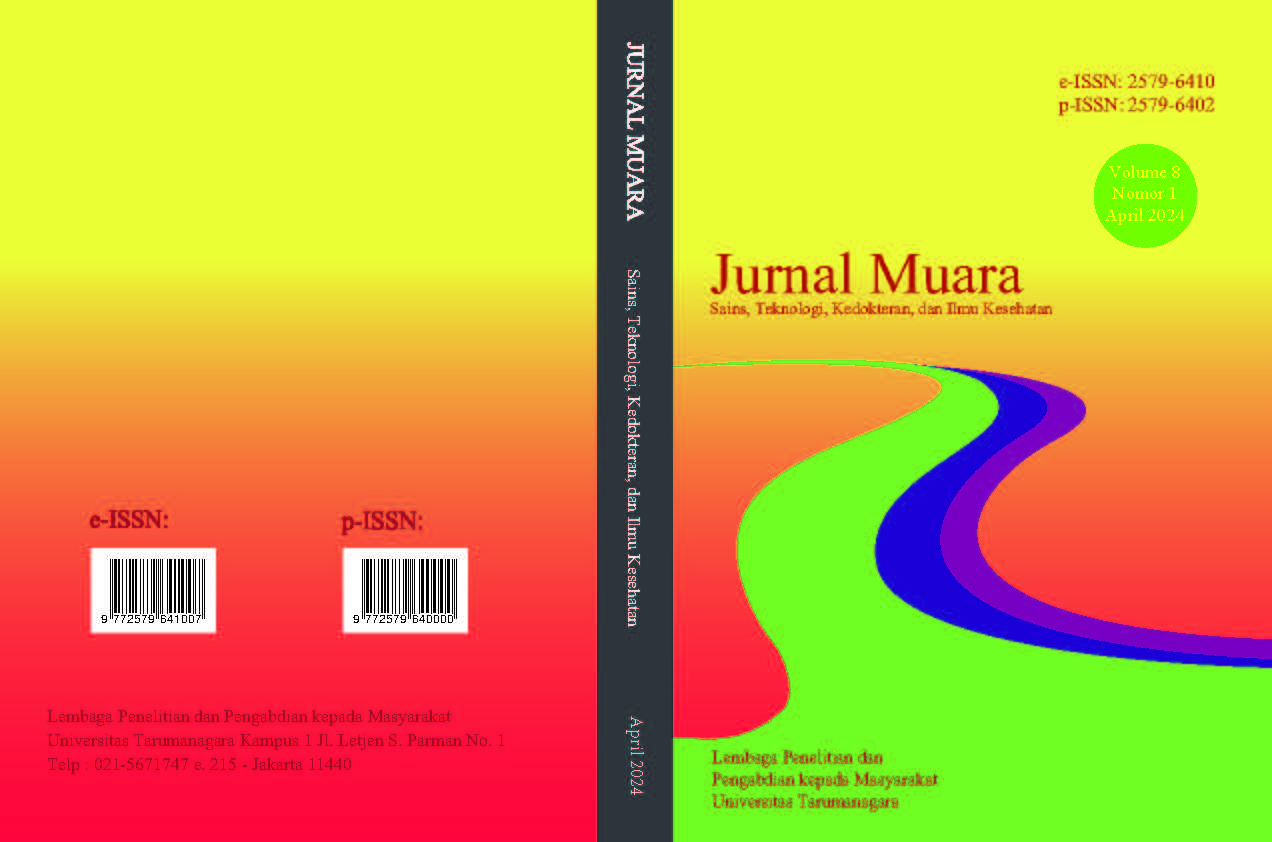PENGARUH PERKUATAN ELEMEN STRUKTUR TERHADAP KINERJA KEGEMPAAN PADA STRUKTUR BAJA DENGAN SISTEM RANGKA MOMEN KHUSUS
Main Article Content
Abstract
Based on BMKG released in 2019, the event during 1821-2019 is reported more than 350 earthquake and tsunami occurred in Indonesia. Therefore, the structural design according to seismic resisting system shall be strictly implemented by the engineer. One of some material that can be used and regulated by the code is hot-rolled steel material. Structural engineering application of steel structure has a flexibility to determine the position of beam-column rigid connection. Apart from its strength, steel material has adequate ductility in dissipating earthquake forces. The seismic-forces resisting system of this research uses steel special moment frames. The aim of this research is to analyze the structural performance using the major axis of wide flange column as a beam-column rigid joint whereas the minor axis of the column is only defined to resists the gravity loads. This research uses non-linear time history analysis with 11 matched ground motion and pushover analysis based on FEMA 440 dan ASCE 41-17. The early step hinges formed of pushover analysis of the beam components are strengthened and evaluated to obtain the effect on the structural performance. The performance criteria on this research uses FEMA 356. The result based on FEMA 440 and ASCE 41-17 method with beam component strengthening shows that the structure performance increases from Life Safety to Immediate Occupancy, however, the time history analysis result shows structural capacity enhancement but neither with its structure performance criteria is come under Immediate Occupancy.
Keywords: Steel Structure with Special Moment Frames; FEMA 440; ASCE 41-17; Non-Linear Analysis; Plastic Hinged; Beam Strengthening; FEMA 356; Life Safety; Immediate Occupancy.
Abstrak
Berdasarkan release oleh BMKG pada tahun 2019, selama rentang waktu tahun 1821-2018, tercatat lebih dari 350 gempa bumi dan tsunami pernah terjadi di wilayah Indonesia. Oleh karena itu penerapan desain struktur tahan gempa merupakan komponen penting untuk diperhatikan. Salah satu material struktur yang dapat digunakan dan sudah diatur dalam tata perencanaan struktur tahan gempa adalah material baja hot-rolled. Rekayasa bangunan struktur baja memiliki fleksibilitas dalam menentukan posisi sambungan balok-kolom rigid. Disamping ditinjau dari kekuatannya, material baja memiliki daktilitas yang baik dalam mendisipasi gaya gempa. Sistem struktur penahan gaya gempa pada penelitian ini menggunakan sistem struktur baja pemikul momen khusus. Tujuan dari penelitian ini adalah menganalisis performa bangunan dengan mengoptimalkan sumbu kuat kolom wide flange sebagai sambungan balok-kolom penahan gaya gempa sedangkan sambungan balok-kolom pada sumbu lemah penampang kolom hanya direncanakan untuk menahan beban gravitasi. Analisis yang digunakan pada penelitian ini yaitu analisis non-linear time history dengan 11 rekaman gerak tanah terskala dan analisis non-linear static pushover berdasarkan FEMA 440 dan ASCE 41-17. Komponen balok yang mengalami mekanisme sendi plastis pada Langkah awal analisis pushover diberikan penguatan dan dievaluasi untuk dinilai pengaruhnya terhadap performa struktur. Klasifikasi kriteria kinerja yang digunakan pada penelitian ini berdasarkan FEMA 356. Hasil analisis berdasarkan metode FEMA 440 dan ASCE 41-17 dengan memberikan perkuatan balok struktur diperoleh peningkatan performa struktur dari Life safety menjadi Immediate Occupancy, disamping itu berdasarkan analisis time history diperoleh peningkatan kapasitas struktur akan tetapi performa struktur tidak mengalami peningkatan yaitu berada pada level kinerja Immediate Occupancy.
Article Details

This work is licensed under a Creative Commons Attribution-NonCommercial-ShareAlike 4.0 International License.
This work is licensed under a Jurnal Muara Sains, Teknologi, Kedokteran dan Ilmu Kesehatan Creative Commons Attribution-ShareAlike 4.0 International License.
Authors transfer copyright or assign exclusive rights to the publisher (including commercial rights)
References
Applied Technology Council (ATC-55 Project). (2005). Improvement of Nonlinear Static Seismic Analysis Procedures (FEMA 440). California.
Araújo, M., Macedo, L., Marques, M. dan Castro, J. M. (2016). Code-based record selection methods for seismic performance assessment of buildings. Earthquake Engineering & Structural Dynamics 45, 129–148.
ASCE/SEI 41-17. (2017). Seismic Evaluation and Retrofit of Existing Buildings. American Society of Civil Engineers. Virginia.
Ertanto, B. C., Satyarno, I., dan Suhendro, B. (2017). Performance Based Design Bangunan Gedung Untuk Level Kinerja Operasional. Inersia, 33, No.2, 13(2).
Gholizadeh, S., R.Kamyab, dan H.Dadashi. (2013). Performance-based design optimization of steel moment frames. International Journal of Optimization in Civil Engineering 2013;3:327–43.
Kaveh, A., Kabir, M. Z., dan Bohlool, M. (2020). Optimum design of three-dimensional steel frames with prismatic and non-prismatic elements. Engineering with Computers 2020, 36, 1011–1027.
Lignos, D. G., dan Krawinkler, H. (2012). Development and utilization of structural component databases for performance-based earthquake engineering. Journal of Structural Engineering, 139, 1382–1394.
Macedo, L. A. F. R. D. (2017). Performance-Based Seismic Design and Assessment of Steel Moment Frame Buildings. Universida Do Porto.
Nabid, N., Hajirasouliha, I., dan Petkovski, M. (2019). Adaptive low computational cost optimisation method for performance-based seismic design of friction dampers. Engineering Structures, 198.
SNI 1726:2019. (2019). Tata Cara Perencanaan Ketahanan Gempa untuk Struktur Bangunan Gedung dan Non Gedung. Badan Standarisasi Nasional. Jakarta.
SNI 7660:2020. (2020). Ketentuan Seismik Untuk Bangunan Gedung Baja Struktural. Badan Standarisasi Nasional. Jakarta.
SNI 1729:2020. (2020). Spesifikasi Untuk Bangunan Gedung Baja Struktural. Badan Standarisasi Nasional. Jakarta.
FEMA 356. (2000). Prestandard and Commentary for The Seismic Rehabilitation of Buildings (FEMA 356). American Society of Civil Engineers .Virginia.
Pusat Gempa Bumi dan Tsunami Kedeputian Geofisika Badan Meteorologi Klimatologi dan Geofisika. (2019). Katalog Gempa Bumi Signifikan dan Merusak 1821-2018. Pusat Gempa Bumi dan Tsunami BMKG. Kemayoran-Jakarta.
P. Zhong. (2016). Ground Motion Simulation Validation for building design and response assessment, University of California.
Tavio, Soegihardjo, H., & Lesmana, Y. (2016). Seismic Behavior of Base-Isolated Residential House with Various Soil Type in High Seismic Regions by Nonlinear Time-History Analysis. International Journal of Applied Engineering Research (IJAER).
Wang, Y. (2021). Study on performance-based seismic design theory. IOP Conference Series: Earth and Environmental Science, 669, 01.



